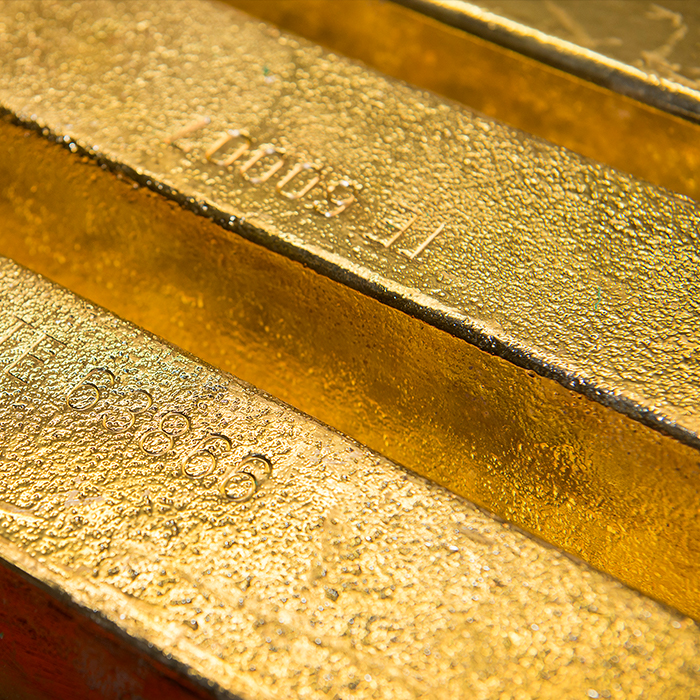
The price of gold has experienced notable volatility in recent months, marked by relative lows and a complex interplay of a range of factors. One element that has influenced gold prices is the trajectory of interest rates. However, it is important to recognise that overall, gold's long-term investment case remains intact, and the recent price action may present an opportunity for astute investors.
Relative Lows and Interest Rates
Over the past year, gold prices have witnessed a period of consolidation and are now hovering at 3-month lows, which could create an attractive entry point for investors. This downward pressure could be partially attributed to the changing interest rate environment. Historically, gold and interest rates have exhibited an inverse relationship. When interest rates rise, the opportunity cost of holding non-yielding assets like gold increases, leading investors to favour interest-bearing instruments instead. Read more about this in our previous article.
The prospect of higher interest rates could enhance the appeal of other investment avenues, such as bonds or equities, which offer potential income or dividend payments. As a result, some investors may be inclined to reallocate their portfolios, reducing their exposure to gold, and thereby exerting downward pressure on its price. The latest narrative of ‘higher for longer’ interest rates, coupled with the spectre of persistently higher inflation, has led the gold price into a consolidating pattern, trading broadly between £1,500 and £1,625.
The Role of Monetary Policy
The influence of interest rates on gold prices is primarily driven by monetary policy decisions. Central banks play a pivotal role in determining interest rates, and their actions are often guided by broader economic considerations. In times of economic uncertainty or market turbulence, central banks may lower interest rates to stimulate growth and provide stability. These accommodative monetary policies are generally favourable for gold, as the opportunity cost of holding the precious metal decreases, making it an attractive store of value.
Conversely, when central banks signal a tightening of monetary policy due to economic expansion or inflation concerns, interest rates tend to rise. This development can lead investors to divert their capital towards higher-yielding assets, putting downward pressure on gold prices. However, in a recent article by Reuters, it was cited that several US Federal Reserve (Fed) officials believe we are ‘getting close’ to the end of the rate hiking cycle in the US. The commonly held view is that the Fed will need to implement two more rate rises before the end of the year, with the first increase later this month to bring policy rates to 5.25%-5.5%. This policy divergence between the US and the UK and Europe may cause downward pressure on the US dollar in the short term, which should support the gold price.
Over here in the UK, inflation has remained elevated, and expectations are for interest rates to move towards 6% by the end of the year, before falling in 2024.

The Long-Term Investment Case for Gold
While short-term fluctuations in gold prices can be influenced by interest rates, it is essential to consider gold's long-term investment case. Gold has been revered as a safe-haven asset and a store of value for centuries. It has consistently demonstrated its ability to retain its worth during times of economic uncertainty and inflationary pressures.
Gold's status as a hedge against inflation is particularly noteworthy. Inflation erodes the purchasing power of fiat currencies, making gold an appealing option for investors seeking to protect their wealth. The current global economic climate, characterized by unprecedented fiscal stimulus measures and potential inflationary risks, strengthens gold's allure as a long-term investment.
Moreover, gold is a highly liquid asset, traded on global exchanges around the clock. It can provide diversification benefits to investment portfolios, reducing risk exposure to other asset classes like stocks and bonds. Additionally, gold has a low correlation with traditional financial instruments, ensuring it can act as a counterbalance during times of market turbulence.
Conclusion
The recent gold price action, characterized by relative lows and the influence of interest rates, underscores the intricate relationship between the precious metal and monetary policy. However, it is crucial to consider the long-term investment case for gold. Its historical role as a safe-haven asset, hedge against inflation, and portfolio diversifier remains intact.
Central bank buying also remains healthy, following the unprecedented accumulation of gold by the banks in 2022. According to the World Gold Council, last year was not only the thirteenth consecutive year of net purchases, but also the highest level of annual central bank demand on record, going back to 1950. Read the full World Gold Council report here.
As investors navigate an uncertain economic landscape, it is prudent to recognise the enduring value of gold. While short-term fluctuations may present challenges, those with a long-term perspective may view the recent price action as an opportunity to accumulate this precious metal at relatively attractive levels. As always, investors should conduct thorough research, seek professional advice, and align their investment decisions with their specific financial goals and risk tolerance.
There are many ways to invest in gold, and other precious metals, with The Royal Mint. A tax efficient approach to making gold bullion investments can be through a SIPP (Self Invested Personal Pensions) or SSAS (Small Self-Administered Schemes) pension, such as Gold for Pension.




